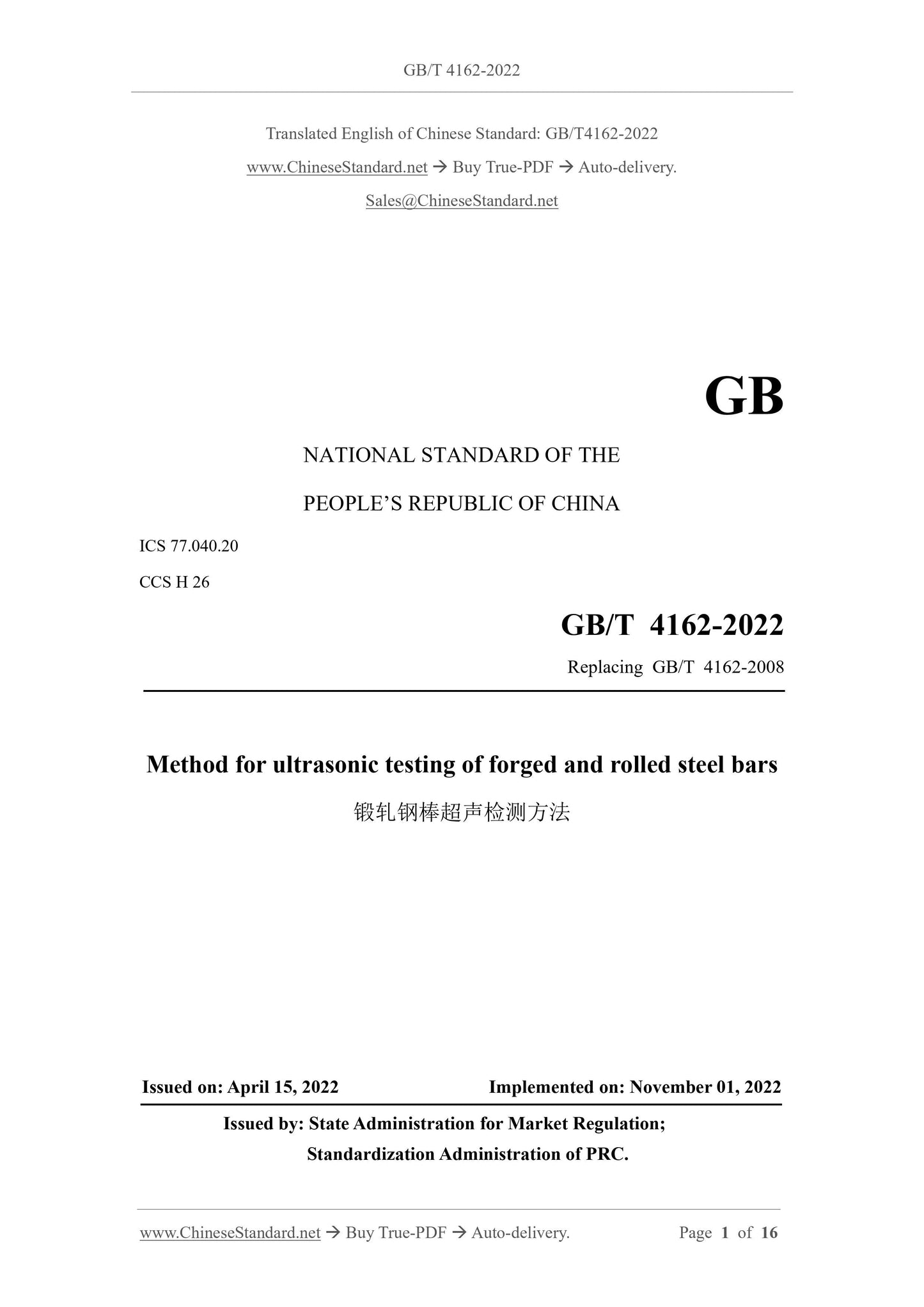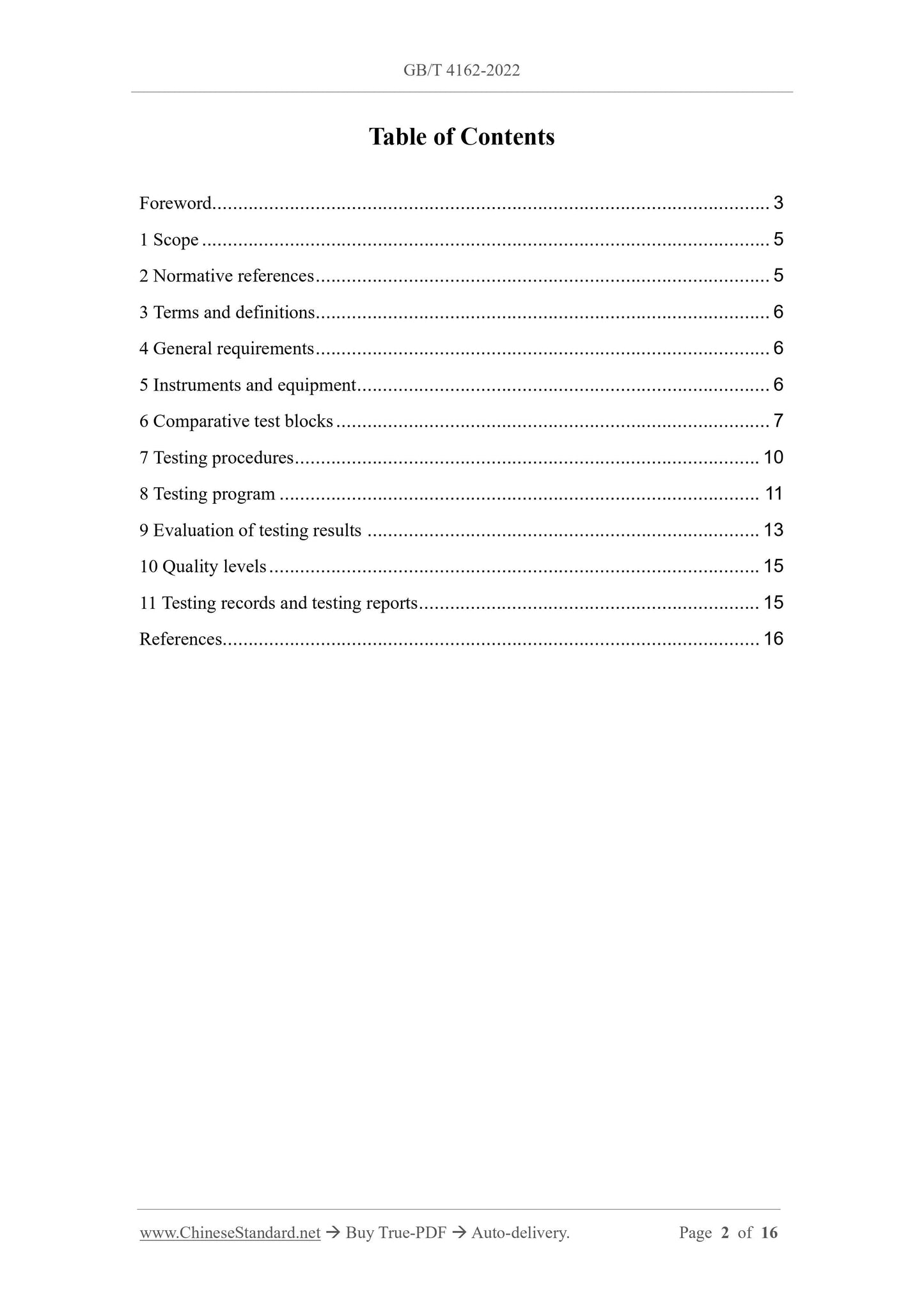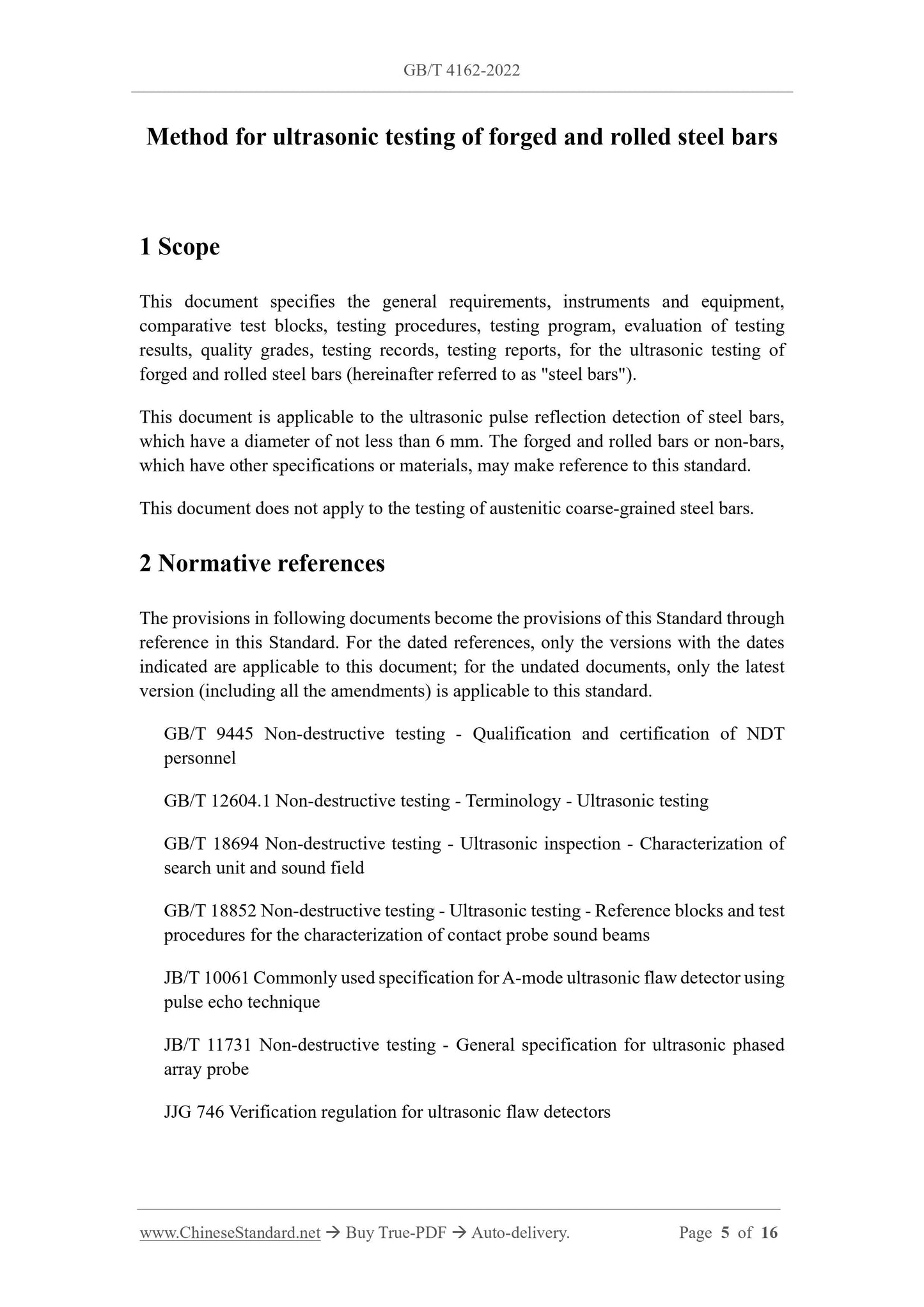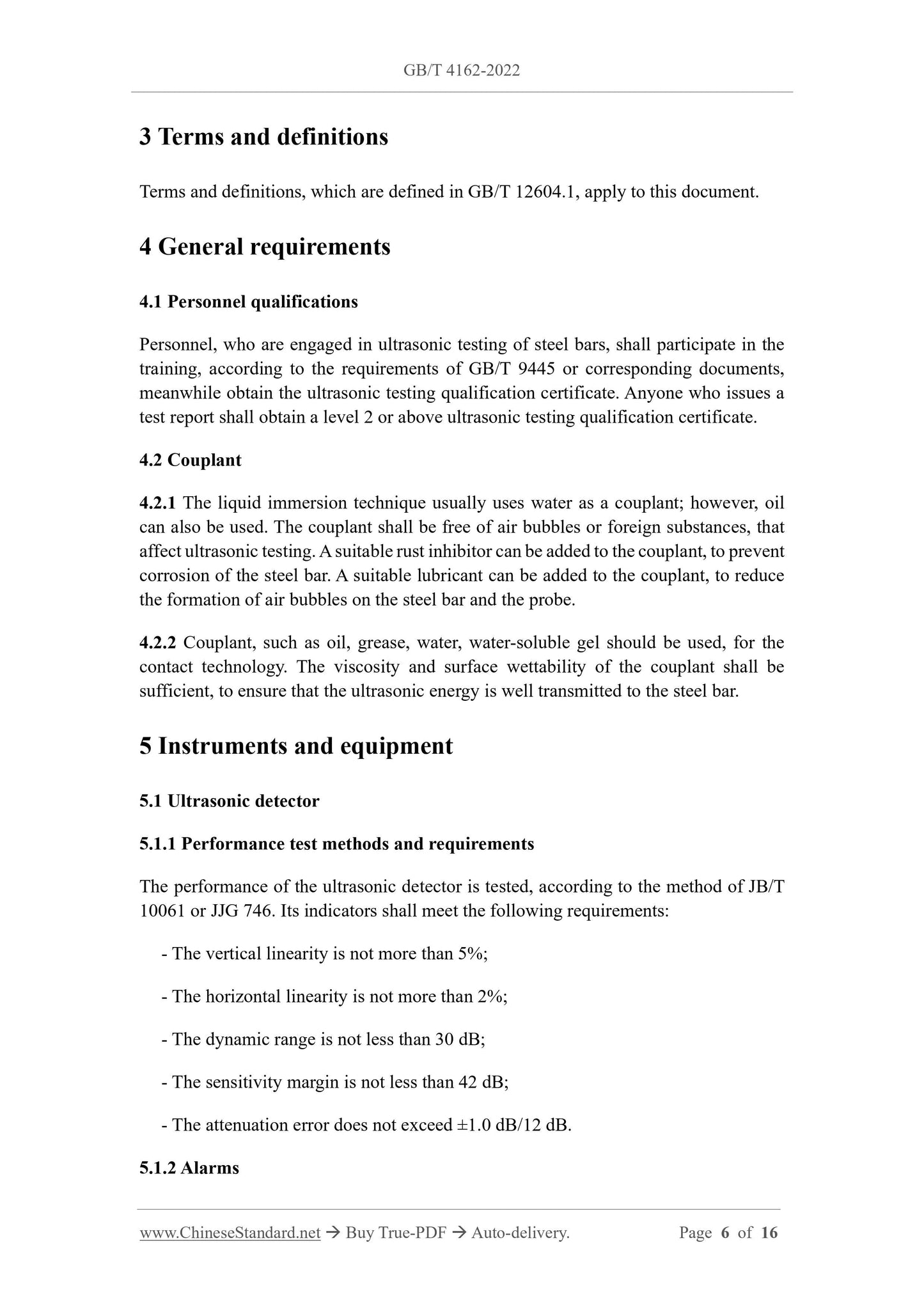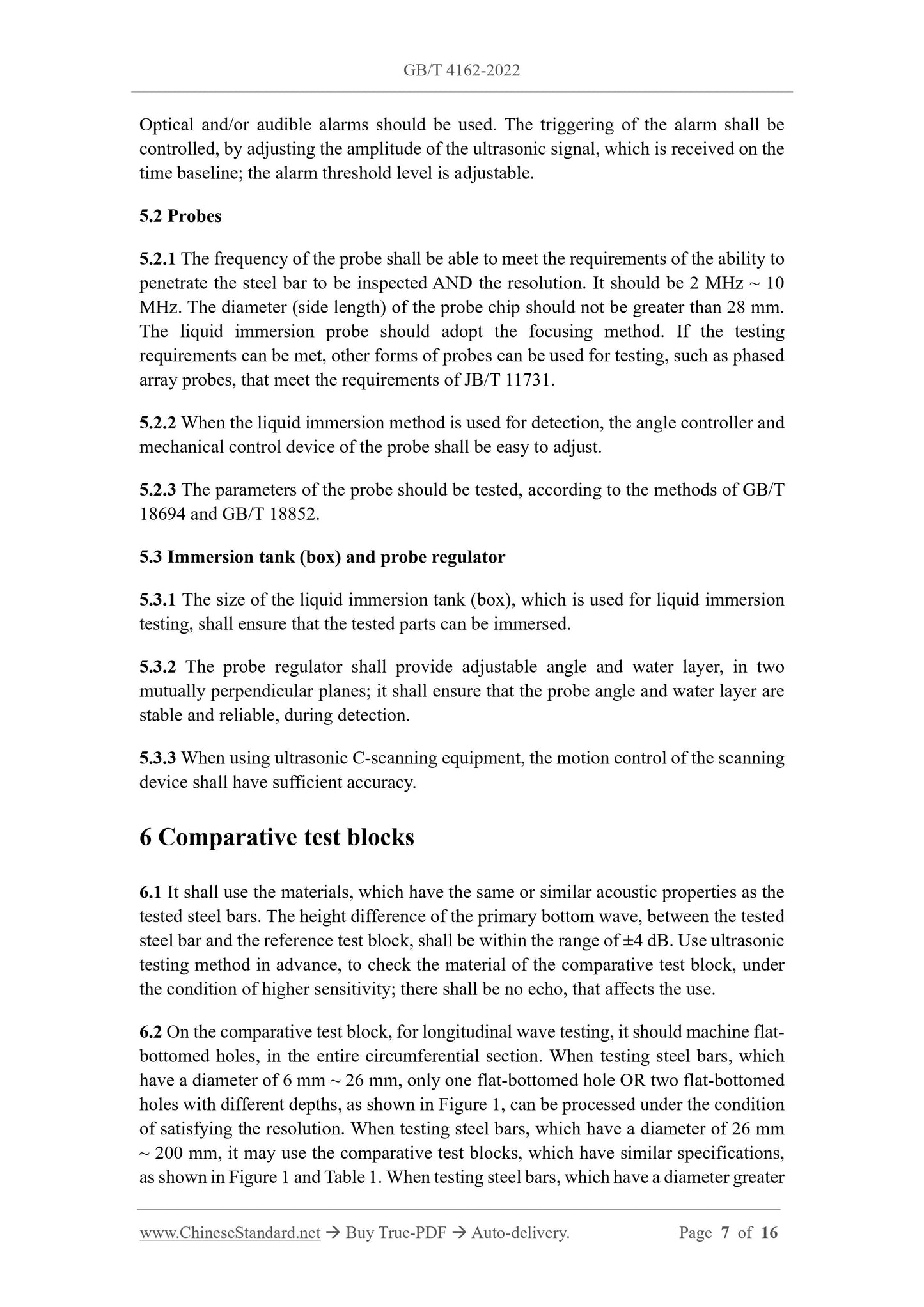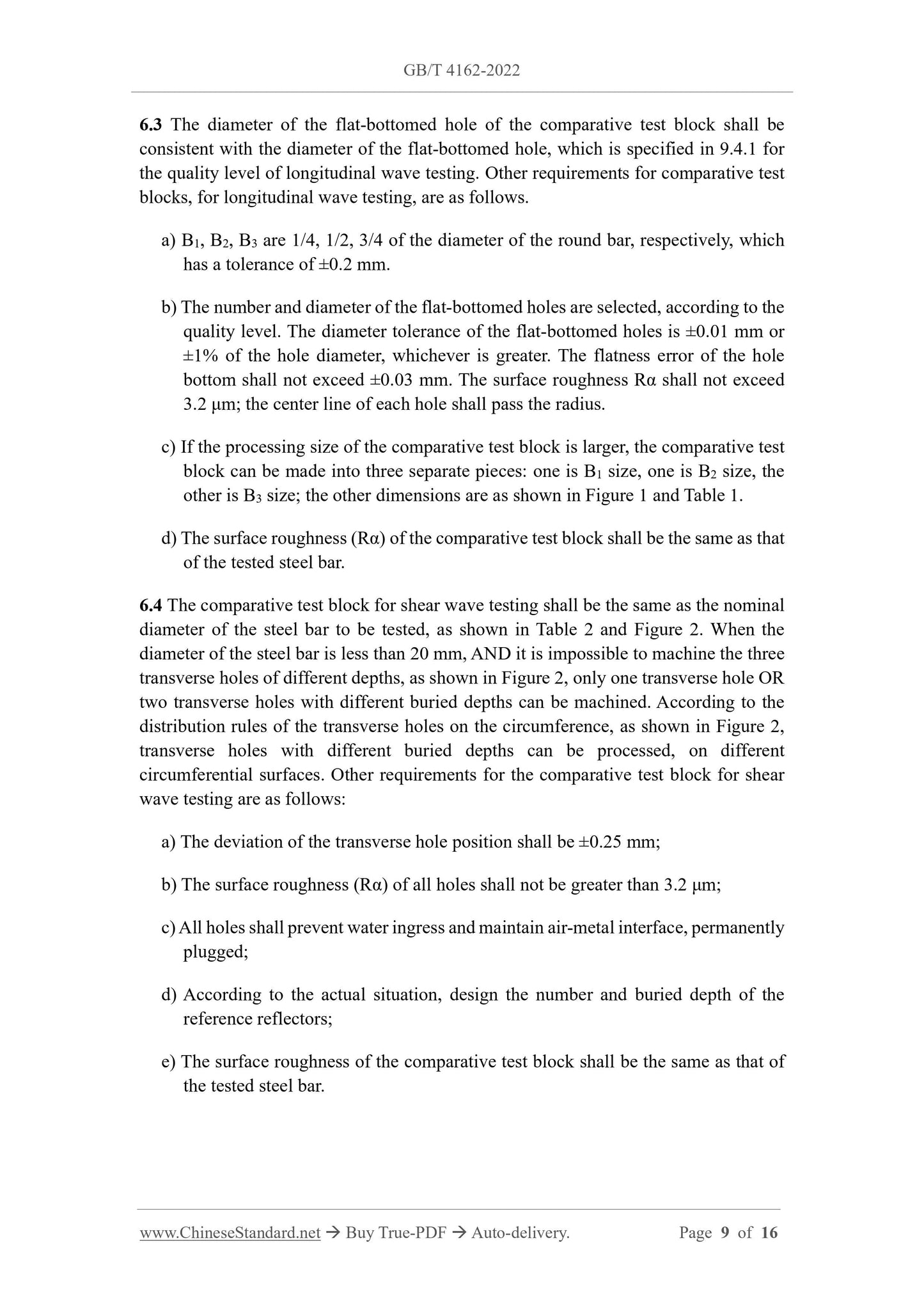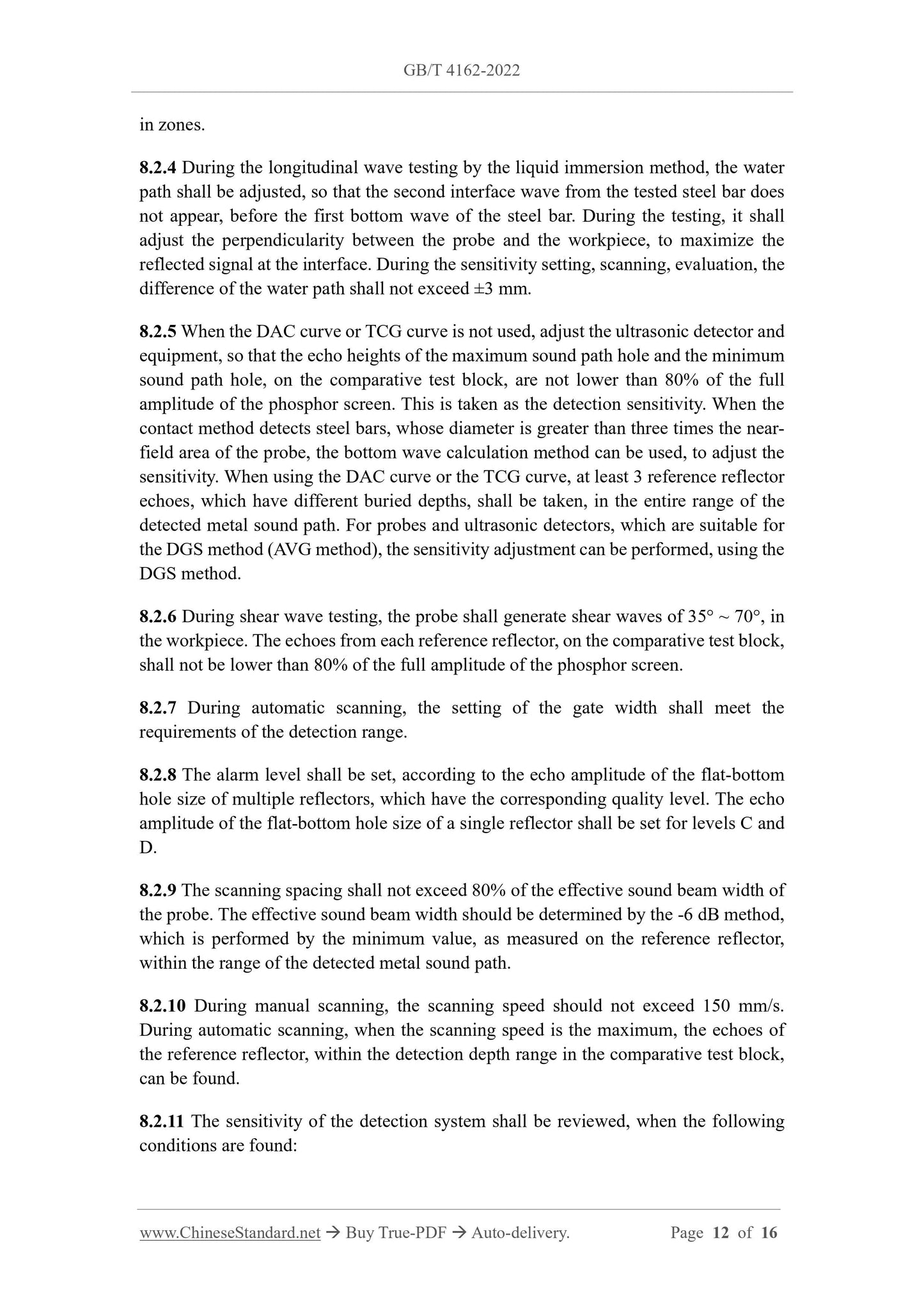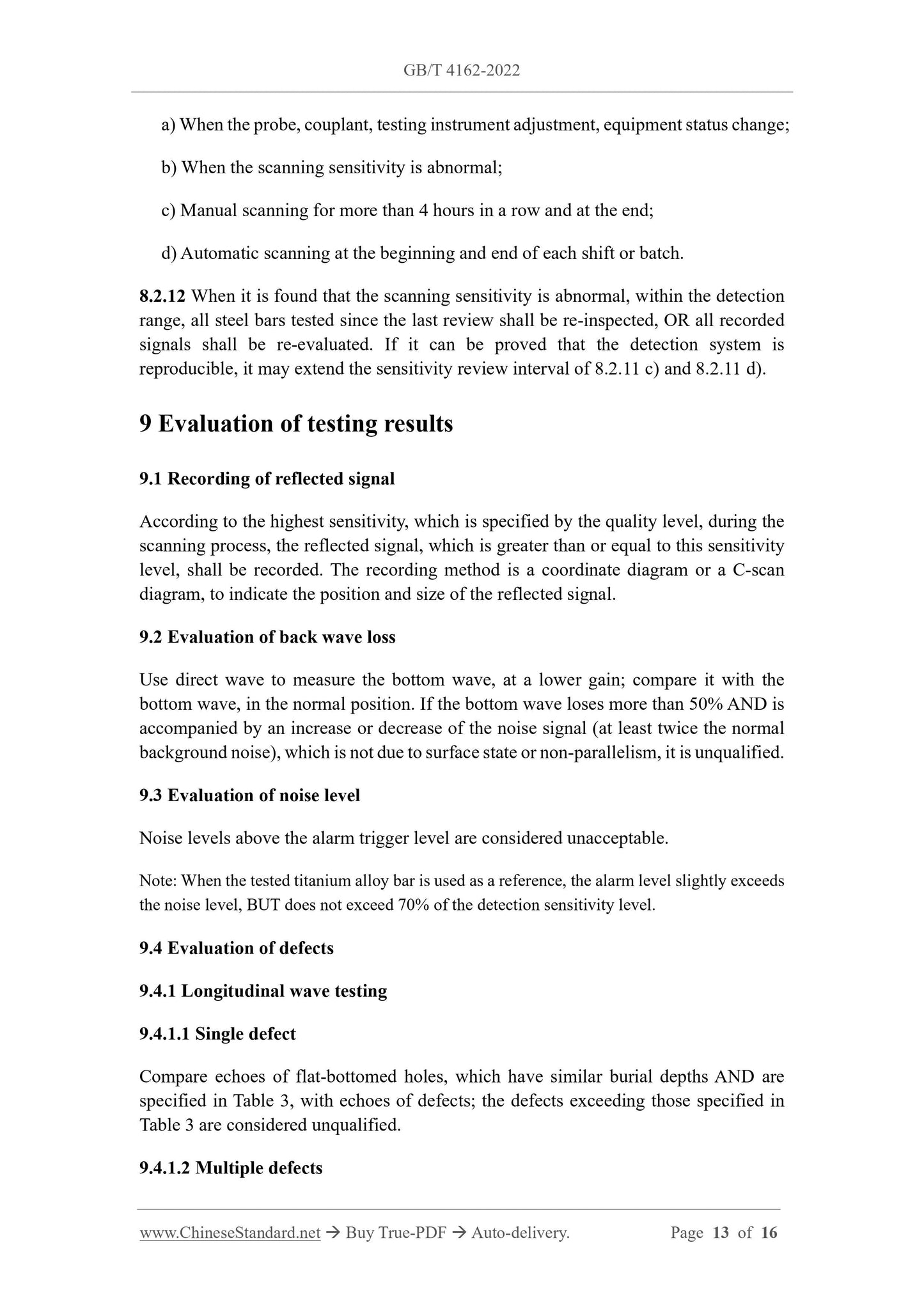1
/
of
8
www.ChineseStandard.us -- Field Test Asia Pte. Ltd.
GB/T 4162-2022 English PDF (GB/T4162-2022)
GB/T 4162-2022 English PDF (GB/T4162-2022)
Regular price
$185.00
Regular price
Sale price
$185.00
Unit price
/
per
Shipping calculated at checkout.
Couldn't load pickup availability
GB/T 4162-2022: Method for ultrasonic testing of forged and rolled steel bars
Delivery: 9 seconds. Download (and Email) true-PDF + Invoice.Get Quotation: Click GB/T 4162-2022 (Self-service in 1-minute)
Newer / historical versions: GB/T 4162-2022
Preview True-PDF
Scope
This document specifies the general requirements, instruments and equipment,comparative test blocks, testing procedures, testing program, evaluation of testing
results, quality grades, testing records, testing reports, for the ultrasonic testing of
forged and rolled steel bars (hereinafter referred to as "steel bars").
This document is applicable to the ultrasonic pulse reflection detection of steel bars,
which have a diameter of not less than 6 mm. The forged and rolled bars or non-bars,
which have other specifications or materials, may make reference to this standard.
This document does not apply to the testing of austenitic coarse-grained steel bars.
Basic Data
| Standard ID | GB/T 4162-2022 (GB/T4162-2022) |
| Description (Translated English) | Method for ultrasonic testing of forged and rolled steel bars |
| Sector / Industry | National Standard (Recommended) |
| Classification of Chinese Standard | H26 |
| Word Count Estimation | 10,110 |
| Issuing agency(ies) | State Administration for Market Regulation, China National Standardization Administration |
Share
